35 Wildflowers that Grow in Oklahoma: Identification Guide (With Pictures)
-
Lindsey Lawson
- Last updated:
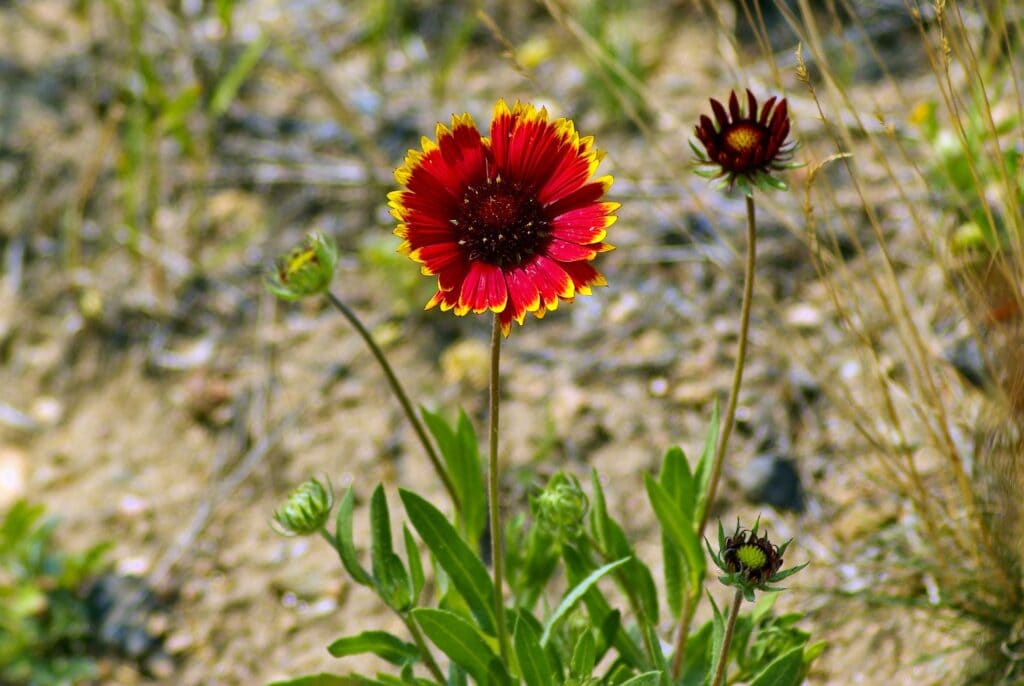
Oklahoma has a very diverse topography that includes forests, mountains, prairies, rivers, lakes, canyons, and mesas. These varied habitats mean Oklahoma is home to many different kinds of wildflowers.
Because there are numerous species out there, it can be really hard to identify specific wildflowers that you’ve come across. Not only that but there are also plenty of hybrids that have made their way into the natural landscape. Keep reading to learn more about the 35 types of wildflowers you can expect to find throughout the Sooner State.
 The 35 Wildflowers that Grow in Oklahoma
The 35 Wildflowers that Grow in Oklahoma
1. Indian Blanket – Oklahoma’s State Wildflower
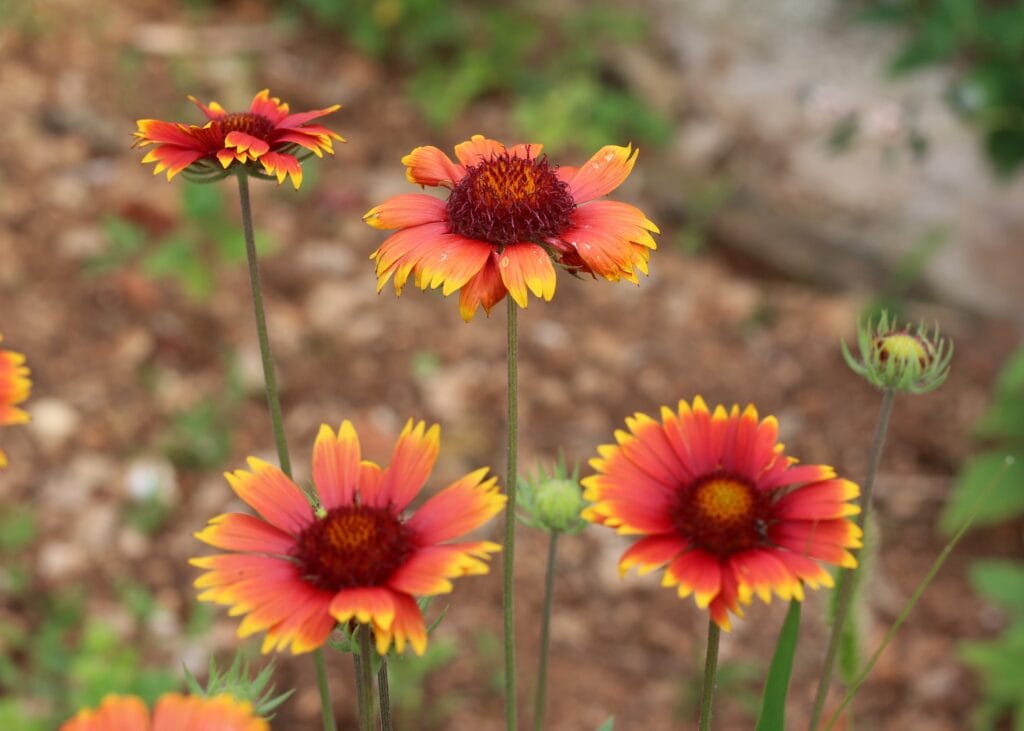
| Scientific Name: | Gaillardia pulchella |
| Bloom Time: | May to August |
| Sun Exposure: | Full sun, partial shade |
| USDA Hardiness Region: | 5-9 |
The Indian Blanket is a gorgeous wildflower that is a member of the Asteraceae family, which is the largest family of flowering plants. This flower is distributed across the Central and Southern United States and Northern Mexico. It was named Oklahoma’s official state wildflower in 1986.
The Indian Blanket features disc-shaped flowers with vibrant orange-red rays with yellow tips. During the blooming season from May to August, one plant may have as many as 150 or more blooming flowers. They are very common along the roadside and within pastures and will attract butterflies and songbirds.
2. Blue Star
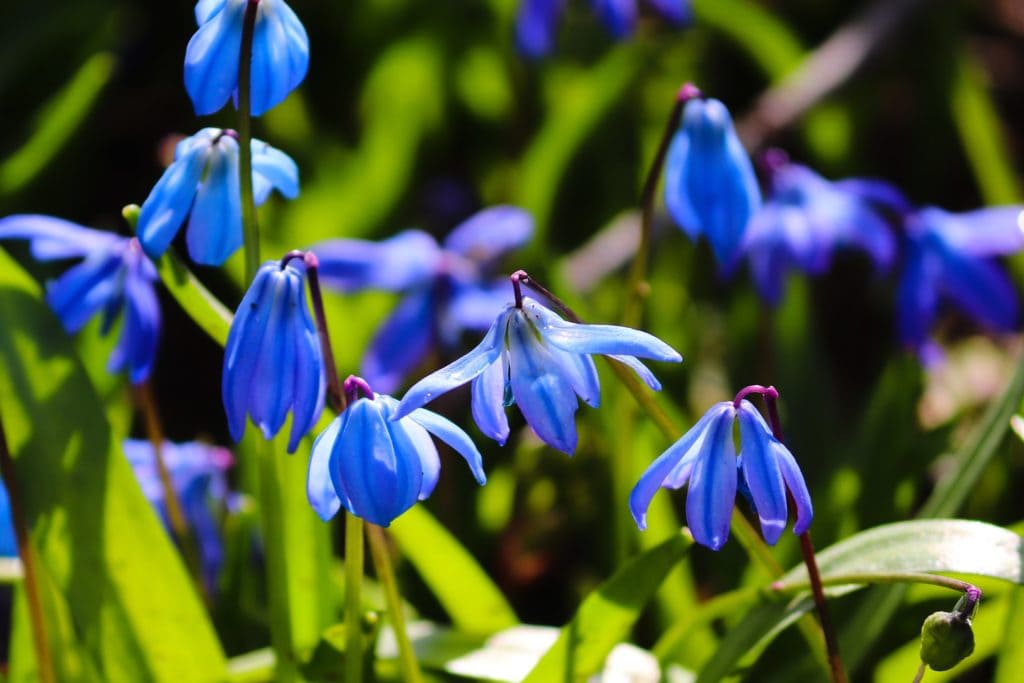
| Scientific Name: | Amsonia tabernaemontana |
| Bloom Time: | March to June |
| Sun Exposure: | Full sun, partial shade |
| USDA Hardiness Region: | 3-9 |
Blue Star, also referred to as Blue Dogbane or Eastern Bluestar, is native to the Central and Eastern United States. It features clusters of star-shaped, light blue flowers that are typically no bigger than ¾ inches. The plant’s narrow, oval leaves are bright green on the surface and pale underneath.
Blue Star is popular among pollinators like hummingbirds, carpenter bees, butterflies, and moths. It is commonly found in wet, sandy, rich soils near rocky woods and thickets. Blooms will appear during the spring and last until early summer.
3. Arkansas Bluestar
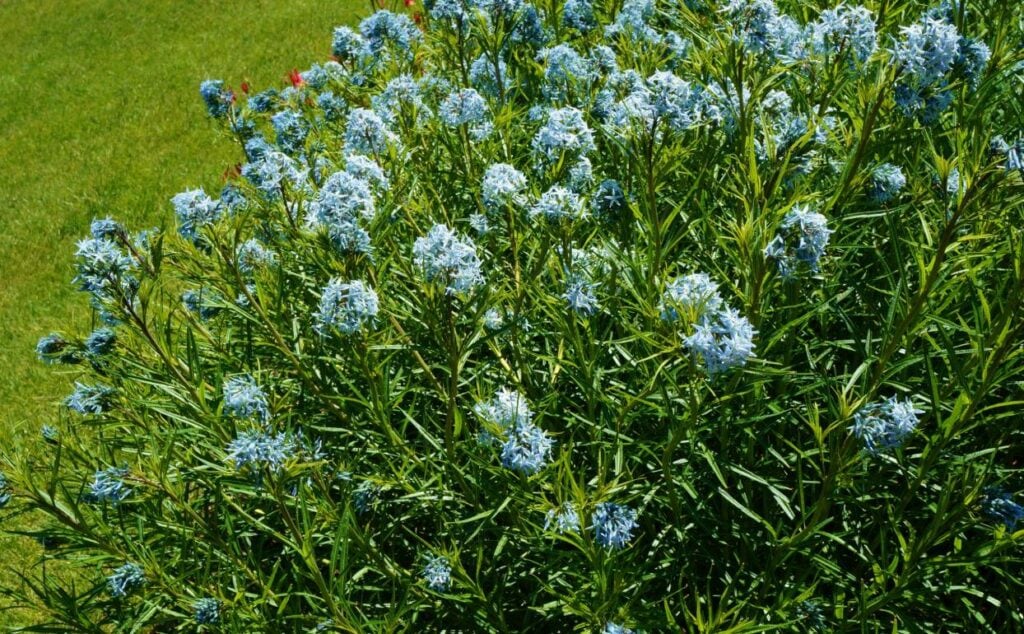
| Scientific Name: | Amsonia hubrichtii |
| Bloom Time: | Late spring to early summer |
| Sun Exposure: | Full sun, partial shade |
| USDA Hardiness Region: | 5-9 |
The Arkansas Bluestar is a rare perennial of the Apocynaceae family. It was first discovered in the 1940s in the Ouachita Mountains of central Arkansas and is native to the open woodlands of the South-Central United States.
This wildflower has unique, feathered green foliage with clusters of light blue star-shaped clusters that bloom from late spring to early summer. The plant is deer resistant but is very attractive to pollinators, especially butterflies. The foliage turns vibrant yellow during the fall.
4. Eastern Columbine
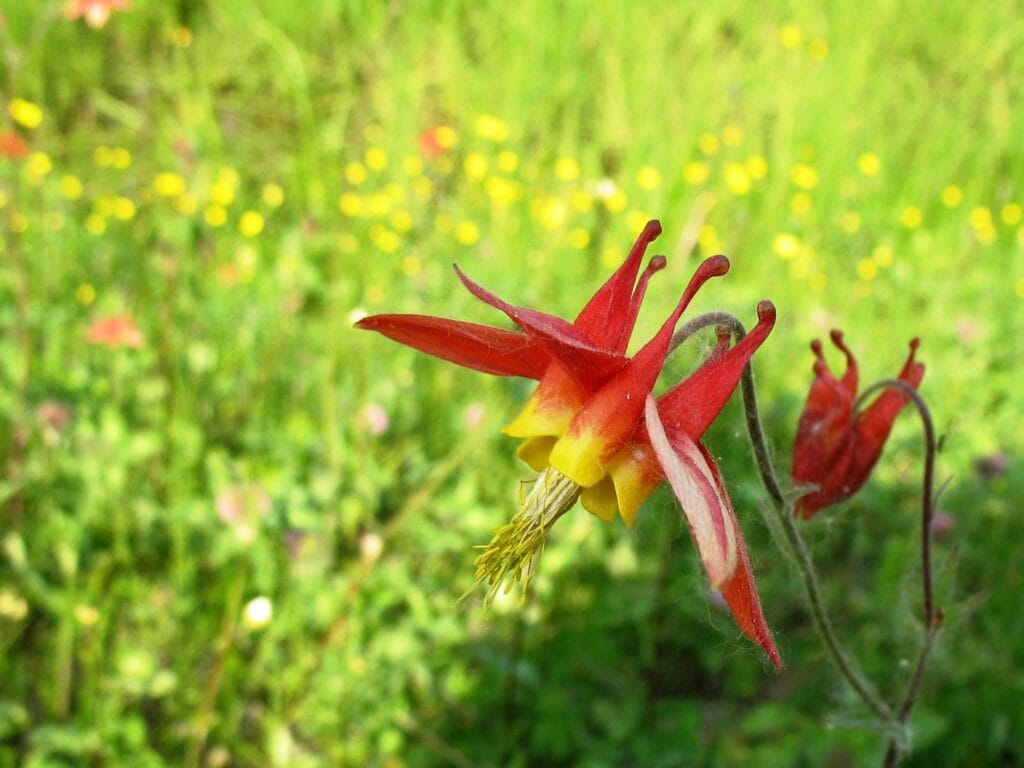
| Scientific Name: | Aquilegia canadensis |
| Bloom Time: | April to June |
| Sun Exposure: | Full sun, light shade |
| USDA Hardiness Region: | 3-9 |
The Eastern Columbine is native to the Eastern half of the United States and grows well in various conditions. It can be found at the edges of woodlands and along riverbanks thriving in differing soil and light conditions.
This wildflower displays red and yellow dangling flowers on its long, erect stems. Blooms are 1 to 2 inches in length and feature 5 petals with a long, nectar-bearing spur. Easter Columbine blooms from April to June and will attract a variety of butterflies and hummingbirds.
5. Indian Plantain
| Scientific Name: | Arnoglossum plantagineum |
| Bloom Time: | June to October |
| Sun Exposure: | Full sun, partial shade |
| USDA Hardiness Region: | 3-9 |
Indian Plantain is a native wildflower found throughout the eastern United States near woodland edges, clearings, prairies, meadows, and along stream banks. Wasps, butterflies, birds, bees, and moths are highly attracted to these flowers.
The foliage is glossy blueish-green and very showy. While younger plants do not flower, mature plants will produce clusters of slender, small flowers at the top of the stalk that range in color from with to yellowish green. Blooms will take place from June to October.
6. Common Milkweed
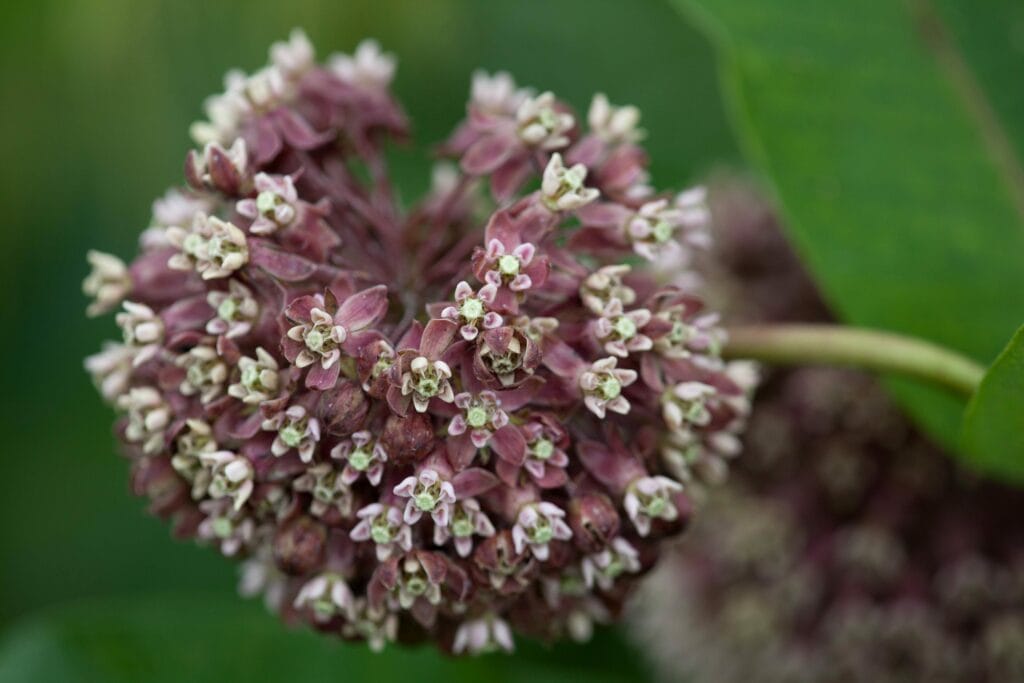
| Scientific Name: | Asclepias syriaca |
| Bloom Time: | June to August |
| Sun Exposure: | Full sun |
| USDA Hardiness Region: | 4-9 |
Milkweed is a genus of about 140 species of herbaceous, perennial, flowering plants of the dogbane family. The Common Milkweed is the most popular version and is native to the central and eastern United States and Canada.
This is a tall plant that blooms flowers from June to August. The 2-to-3-inch umbels feature large clusters of pink to purplish flowers that have a pleasant smell. There can be up to 100 flowers per cluster and 1-3 clusters on each stem.
7. Ground Plum
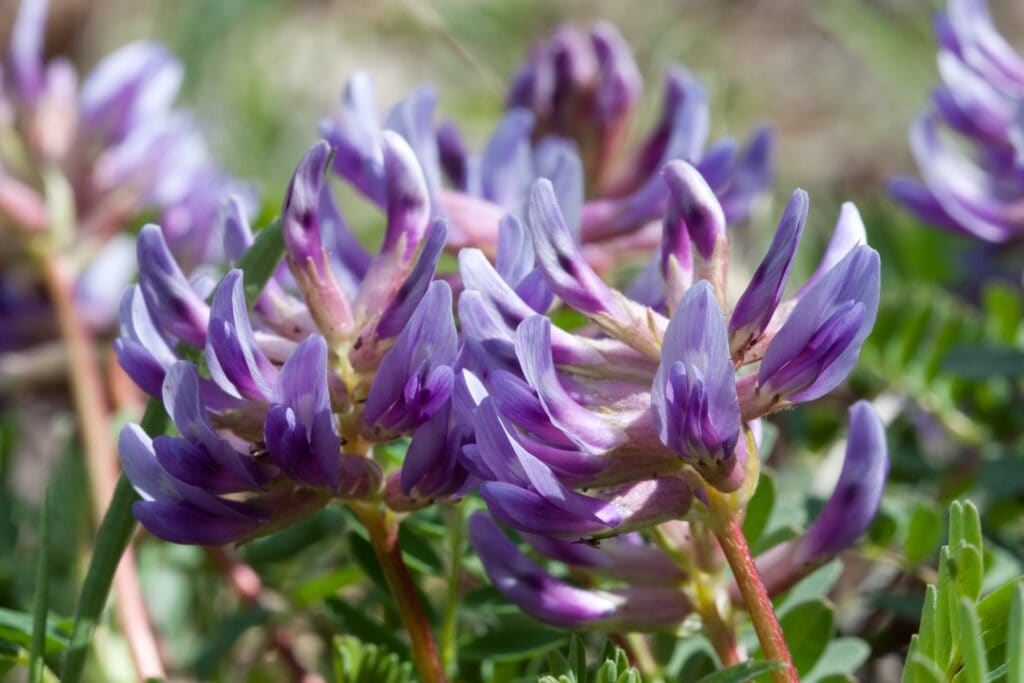
| Scientific Name: | Astragalus crassicarpus |
| Bloom Time: | April to May |
| Sun Exposure: | Full sun |
| USDA Hardiness Region: | 3-6 |
Ground Plum, also referred to as Buffalo Plum, is a perennial species of flowering plant that are part of the legume family. They are native to North America and found mostly in the Great Plains region, as it thrives in dry prairies.
It features pea-shaped light purple flowers that reach about ¾ inches long with an erect egg-shaped upper petal that is notched at the tip. Blooms take place from April to May.
8. White Wild Indigo

| Scientific Name: | Baptisia alba |
| Bloom Time: | April to July |
| Sun Exposure: | Full sun |
| USDA Hardiness Region: | 5-8 |
Wild White Indigo is a mound-shaped, perennial, flowering plant native to the southeastern United States. Growing 2 to 4 feet in height, this plant features dark, blue-gray stems that contrast with its white blooms. It features alternate leaves that are divided into three leaflets.
This plant blooms from April to July in clusters of pea-shaped flowers of about ½ inch in length. The flowers can range from white to almost yellow. The stems become bare during the winter, but the black seed pods often remain attached.
9. Blue False Indigo
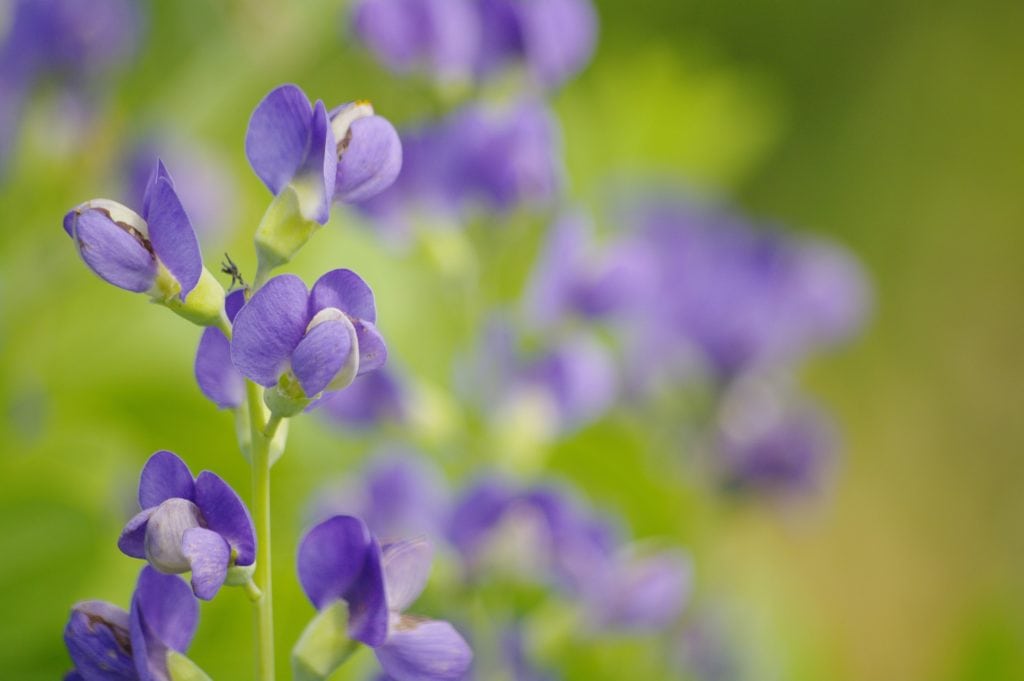
| Scientific Name: | Baptisia australis |
| Bloom Time: | April to July |
| Sun Exposure: | Full sun, partial shade |
| USDA Hardiness Region: | 3-9 |
Blue False Indigo is a stunning plant that is often found in dense forests and wooded areas across the central and eastern United States. It is a large, bush-like perennial that reaches 3 to 4 feet tall.
It gets its name from the dense clusters of deep blue flowers that bloom from the upright spikes. This plant first develops underground and then will begin to bloom from April to July after its first two seasons. The gorgeous blooms become showier as the plant matures.
10. Yellow Wild Indigo
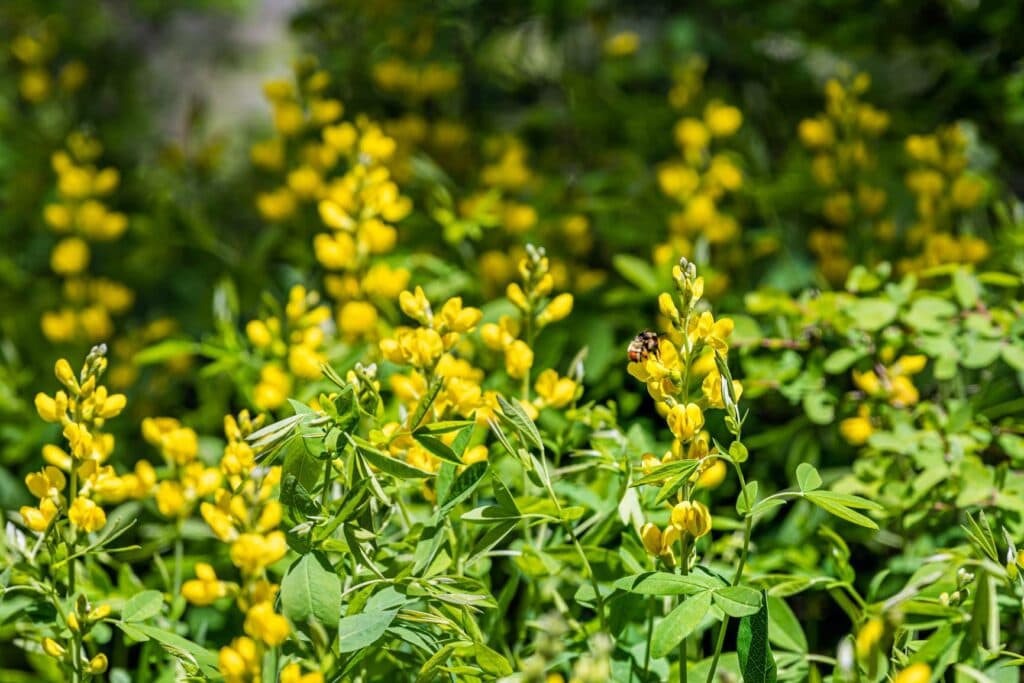
| Scientific Name: | Baptisia sphaerocarpa |
| Bloom Time: | April to July |
| Sun Exposure: | Full sun |
| USDA Hardiness Region: | 3-9 |
Yellow Wild Indigo is another showy wildflower that is native to the Southern United States. It reaches about 2 to 3 feet in height and grows in dry, open woods, clearings, sandhills, and in areas of more sandy, acidic soil.
Just like the Blue False Indigo, this shrub-like wildflower develops a deep root system under the ground and will become showier as it matures. It blooms vibrant yellow flowers from April to May.
11. Purple Poppy Mallow
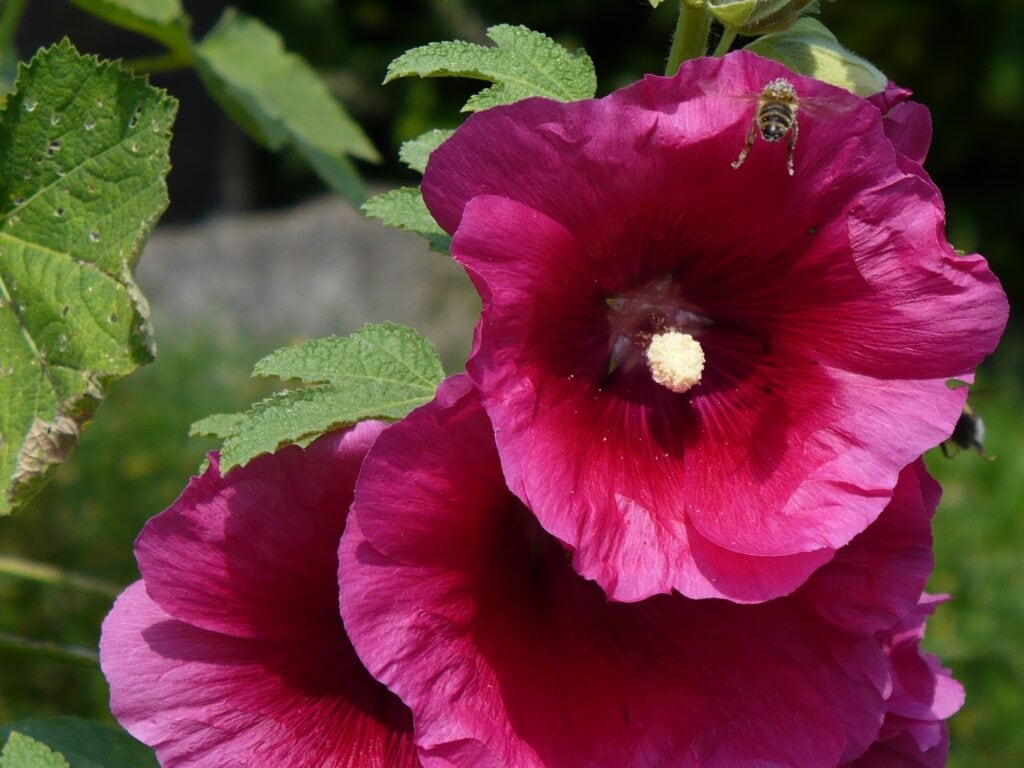
| Scientific Name: | Callirhoe involucrata |
| Bloom Time: | May to August |
| Sun Exposure: | Full sun |
| USDA Hardiness Region: | 4-8 |
The Purple Poppy Mallow is a perennial wildflower in the marshmallow family that is found across the central United States. It grows best in areas that get full sun and have well-draining soil. It has a lengthy blooming season from May to August.
This wildflower displays vibrant magenta flowers with white near the base. The deeply lobed foliage is trailing and offers a lot of ground cover. The flowers themselves reach about 1 to 3 inches across and will not begin dying off until late summer.
12. Wild Hyacinth
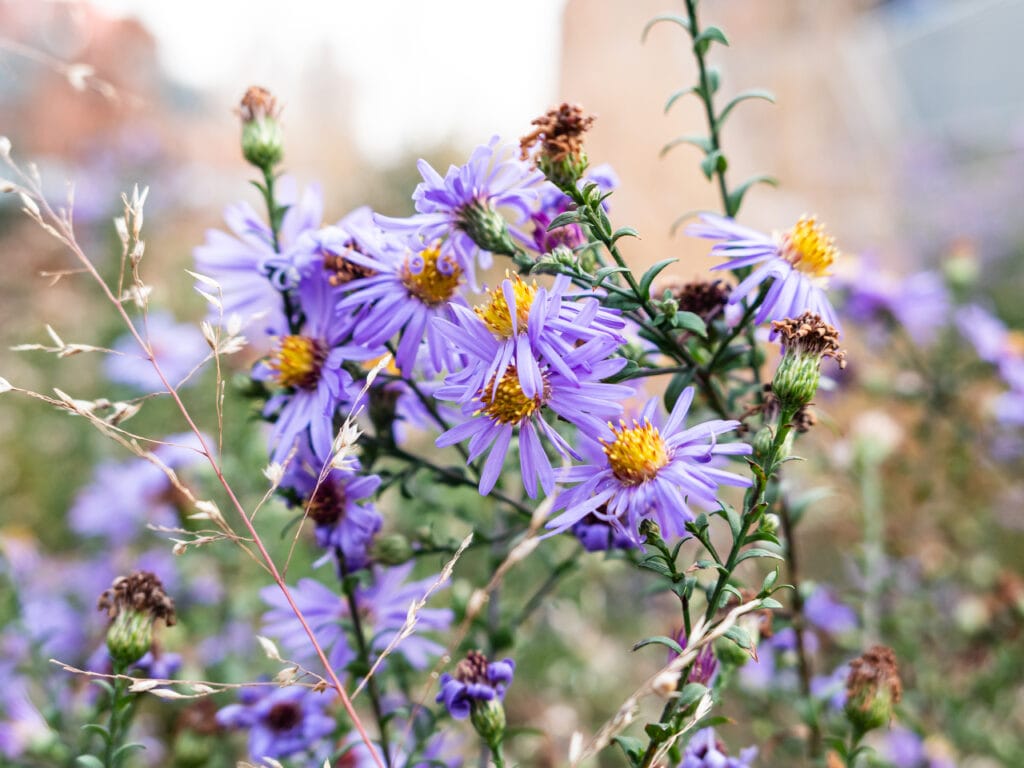
| Scientific Name: | Camassia scilloides |
| Bloom Time: | April to June |
| Sun Exposure: | Full sun, partial shade |
| USDA Hardiness Region: | 4-8 |
Wild Hyacinth is a perennial wildflower that is often seen in moist meadows, along stream banks or near open woods across central and eastern North America. These plants are very long-lived but develop very slowly, taking up to 3 years to flower.
Blooms take place from spring to early summer and display a unique cluster of pale blue, pink, or white star-shaped flowers with bright yellow stamens. Each raceme will typically hold about 20 flowers or so. The plant itself ranges from 1 to 3 feet in height and about 1 to 2 feet in width.
13. Prairie Coreopsis
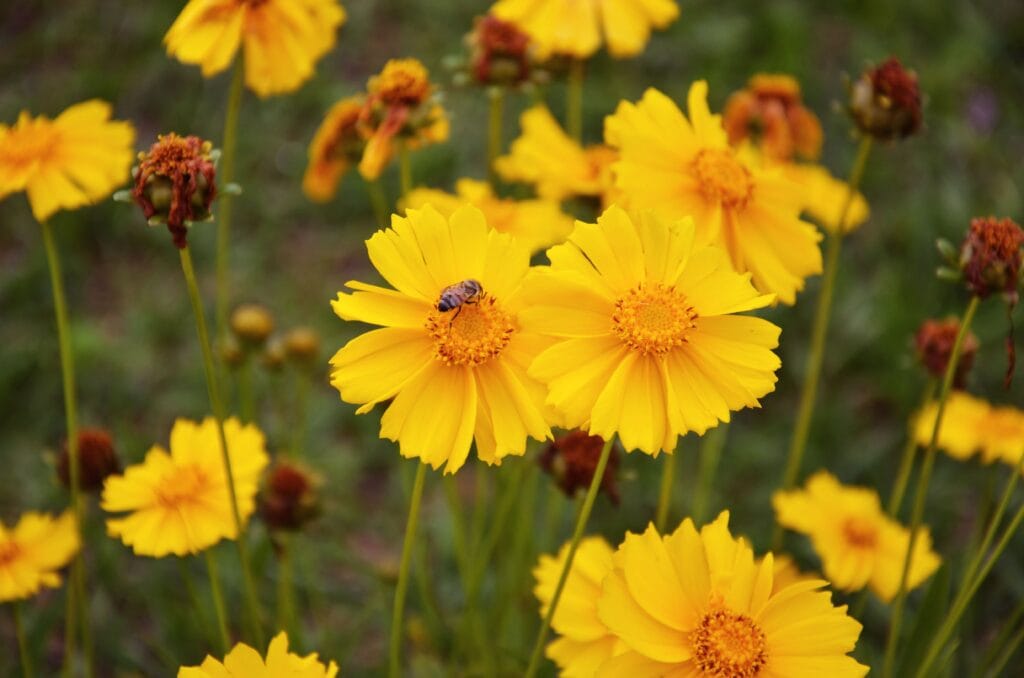
| Scientific Name: | Coreopsis palmata |
| Bloom Time: | June to August |
| Sun Exposure: | Full sun, partial shade |
| USDA Hardiness Region: | 3-8 |
The Prairie Coreopsis is a mid-summer bloomer that is native to the central United States and central Canada, with dense populations throughout the Mississippi Valley and the surrounding area. It thrives in dry soils and is often seen in woodlands, along roadsides, near rocky ridges, and through the prairies.
The plant reaches about 2 ½ feet tall and produces masses of upright showy yellow blooms that are seen from June to August. Also referred to as Tickseed, this perennial has a spread of around 1 to 2 feet.
14. White Prairie Clover
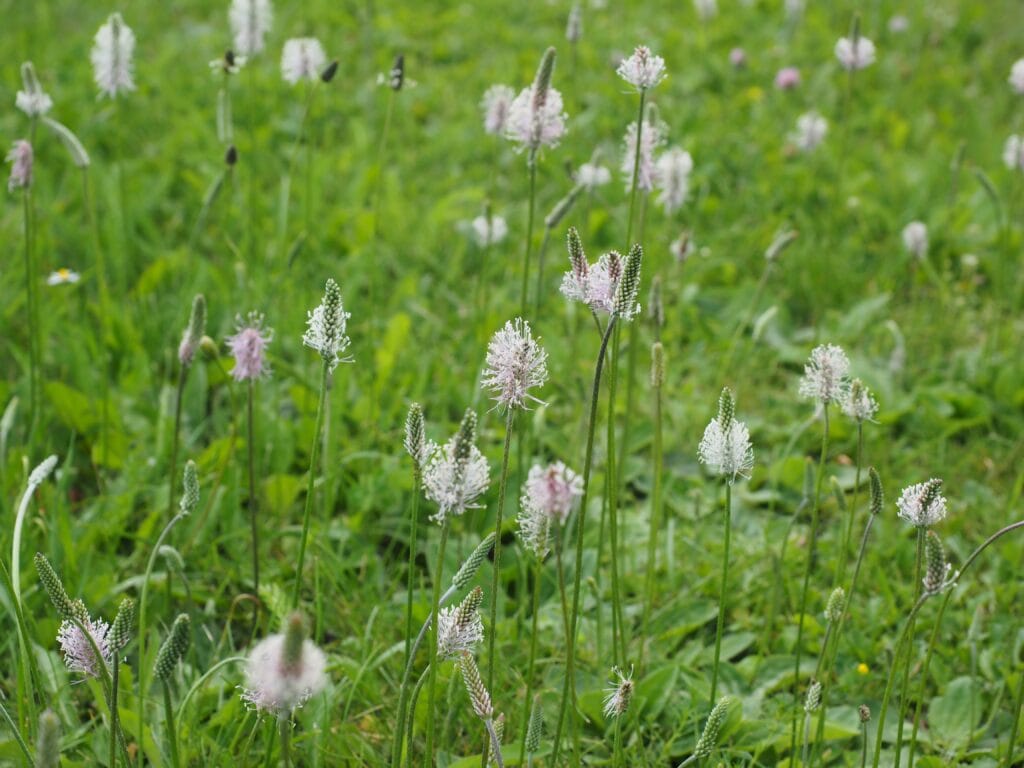
| Scientific Name: | Dalea candida |
| Bloom Time: | May to August |
| Sun Exposure: | Full sun |
| USDA Hardiness Region: | 3-8 |
White Prairie Clover is not a true clover but a flowering plant of the legume family native to North America. It is found throughout the central United States and into northern Mexico.
It features slender stems that reach anywhere from 1 to 2 feet long. It blooms during the summertime and produces small white flowers off of a cylindrical, elongated head.
15. Purple Prairie Clover
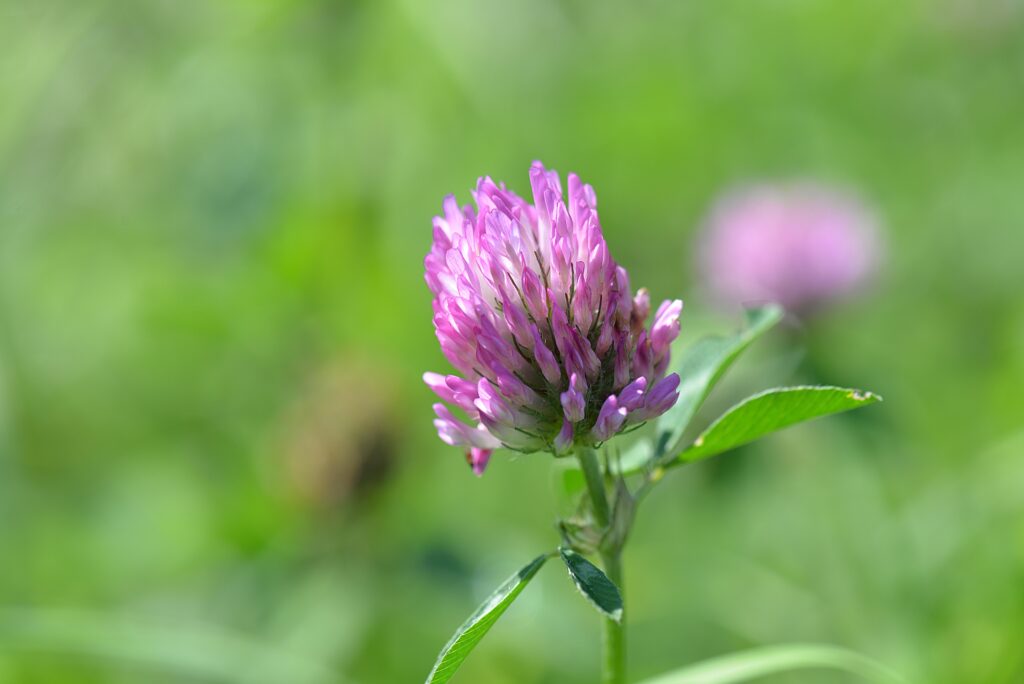
| Scientific Name: | Dalea purpurea |
| Bloom Time: | June to August |
| Sun Exposure: | Full sun |
| USDA Hardiness Region: | 3-8 |
Purple Prairie Clover is a perennial wildflower that reaches 1 to 3 feet tall and is native to the central United States and Canada. Like the White Prairie Clover, it is not a true clover but a member of the legume family and is often grazed by various wildlife and serves various pollinators.
It features cone-shaped spikes that range from 1 to 2 inches in length. Tiny purple flowers with 5 petals and 5 goldish-colored anthers will bloom during the summertime right off the spikes.
16. Pale Coneflower

| Scientific Name: | Echinacea pallida |
| Bloom Time: | June to July |
| Sun Exposure: | Full sun, partial shade |
| USDA Hardiness Region: | 3-10 |
The Pale Purple Coneflower is a herbaceous perennial native to North America from the genus Echinacea. They are one of the nine known species of Echinacea and grow to be about 3 feet tall.
They have a tall, erect stem that ranges from green to purple in color and a hairy-looking stem. The flowers bloom from early June into late July in a display of slender, pale pink to purple petals that droop. There is a reddish-brown disk in the center with white pollen florets.
17. Yellow Coneflower
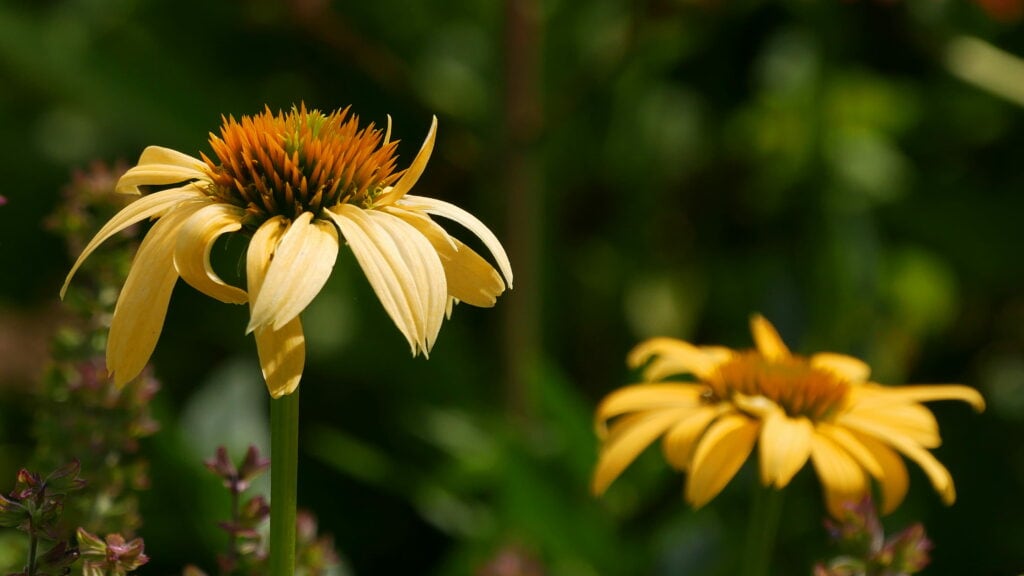
| Scientific Name: | Echinacea paradoxa |
| Bloom Time: | Early summer to early fall |
| Sun Exposure: | Full sun |
| USDA Hardiness Region: | 3-9 |
The Yellow Coneflower is a native wildflower that is found in the central United States in Oklahoma, Missouri, Texas, and Arkansas, where it is currently listed as threatened.
This plant reaches up to 3 feet tall and will have stunning, vibrant yellow ray flowers with a dark disc. The flowers reach about 3 inches across and will bloom early in the summer.
18. Purple Coneflower
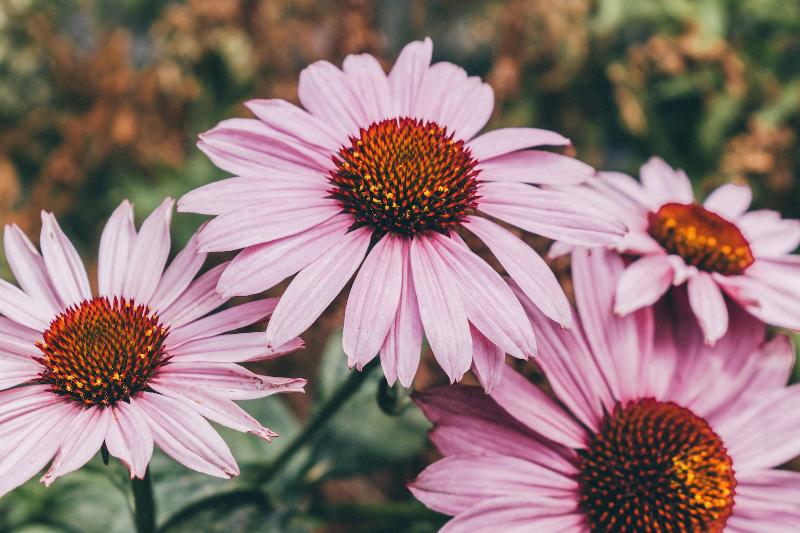
| Scientific Name: | Echinacea purpurea |
| Bloom Time: | June to August |
| Sun Exposure: | Full sun |
| USDA Hardiness Region: | 3-9 |
The Purple Coneflower is native to both the central and eastern United States. It reaches 3 to 4 feet in height and has leaves that are rough to the touch.
The plant blooms beautiful pinkish-purple flowers with a brown, domed head. Each flower can reach up to 5 inches across and blooms will last from June to August. Their rays grow in 1 to 2 rows and are well known for drooping.
19. Leavenworth’s Eryngo
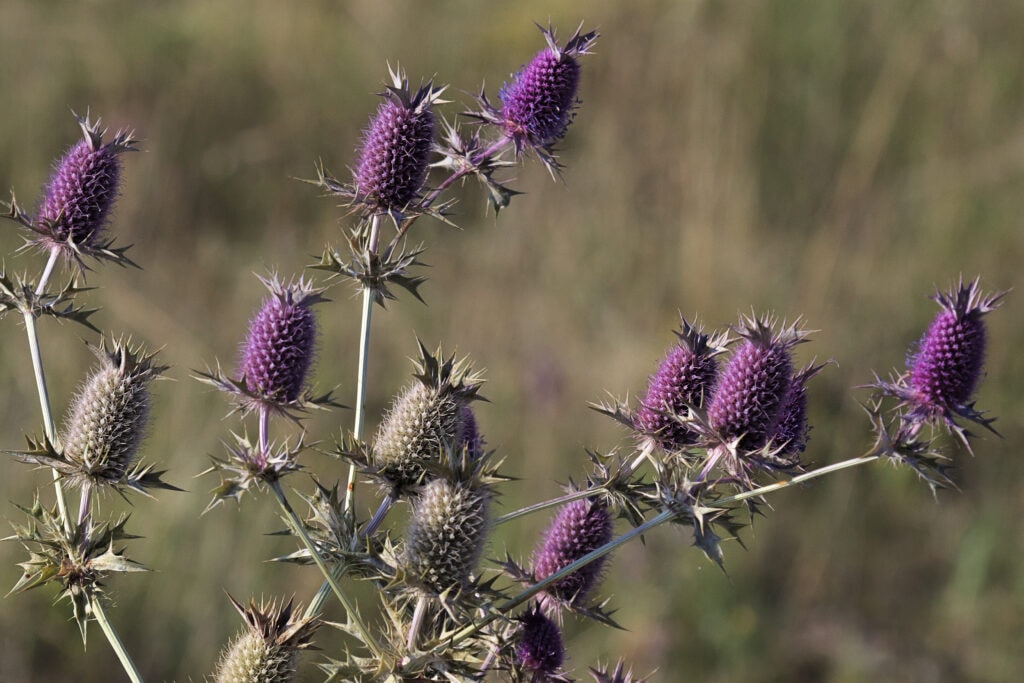
| Scientific Name: | Eryngium leavenworthii |
| Bloom Time: | July to September |
| Sun Exposure: | Full sun, light shade |
| USDA Hardiness Region: | 2-11 |
The Leavenworth’s Eryngo is native to the central United States and is found throughout rocky prairies, open woodlands, and roadside fields. The plants reach nearly 3 feet in height and will flower between July and September.
This is a very prickly plant with blooms that look like vibrant purple spiky pineapples. It is highly attractive to various pollinators including butterflies, moths, bees, bumblebees, flies, and more.
20. Rattlesnake Master
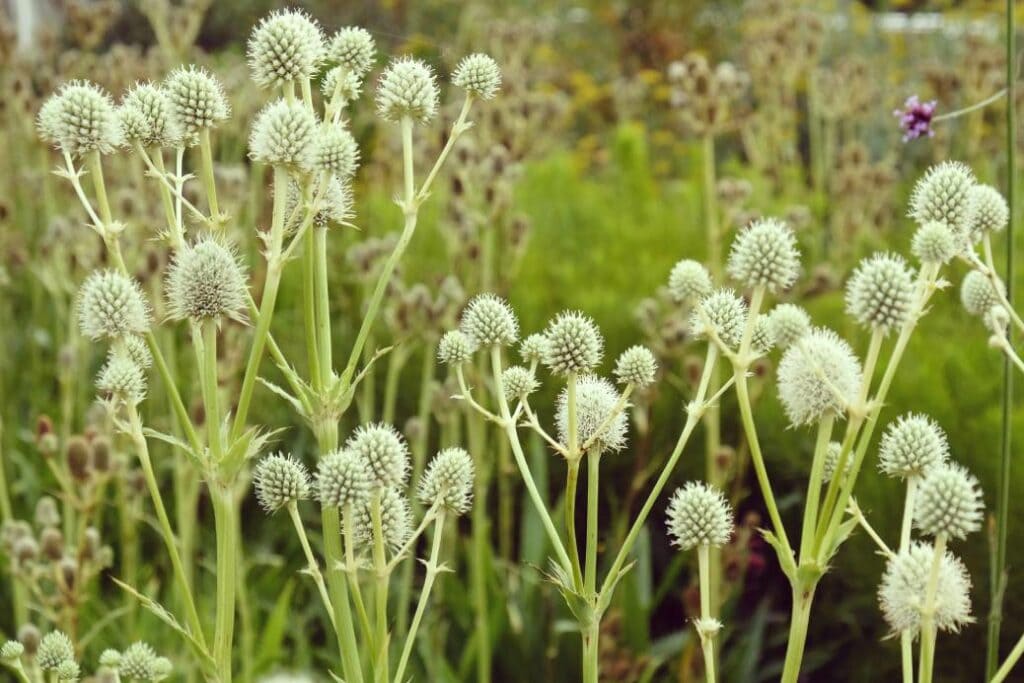
| Scientific Name: | Eryngium yuccifolium |
| Bloom Time: | May to September |
| Sun Exposure: | Full sun |
| USDA Hardiness Region: | 3-8 |
Rattlesnake Master is also referred to as Beargrass and a few other common names. It is an herbaceous perennial that is native to both the open woodlands and tall grass prairies of the central U.S. and across several eastern states.
The plant will grow up to 5 feet tall and have a spread of 2 to 3 feet. The white flowers are dense and tightly packed on globular heads that are about 1 inch across in clumps of 8 to 10.
21. Flowering Spurge
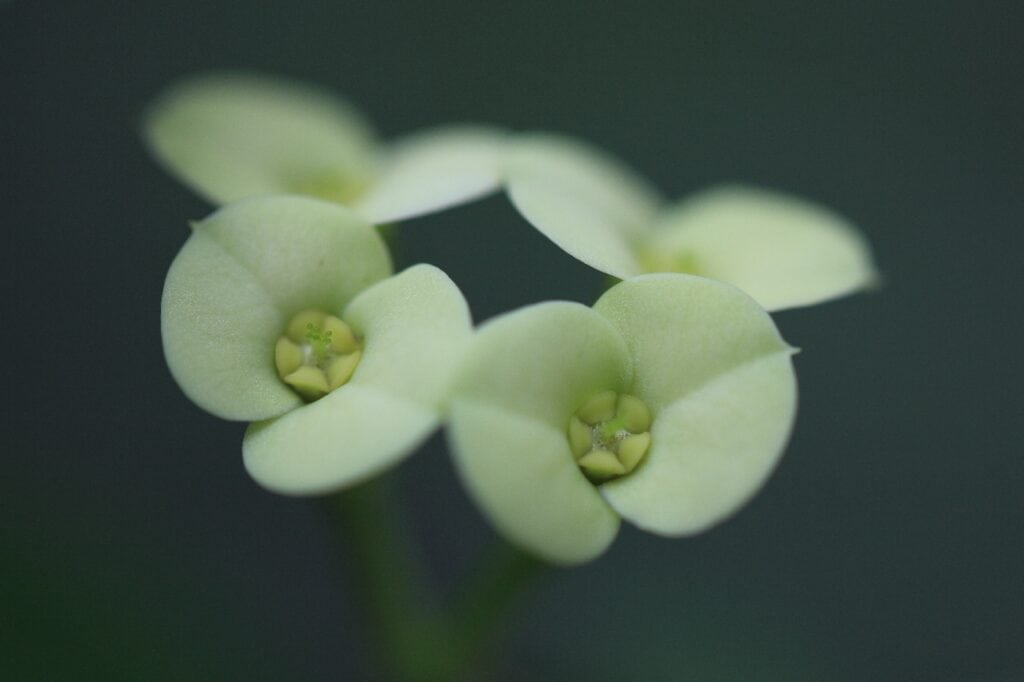
| Scientific Name: | Euphorbia corollata |
| Bloom Time: | June to October |
| Sun Exposure: | Full sun |
| USDA Hardiness Region: | 3-9 |
Flowering Spurge ranges from southeastern Canada into the central and eastern United States. It is a slender plant that is diffusely branched that produces a toxic, milky sap when wounded.
The leaves have an alternating arrangement along the length of each stem. Flowering Spurge blooms from early summer to early fall and produces tiny white flowers.
22. Sweet Joe Pye Weed
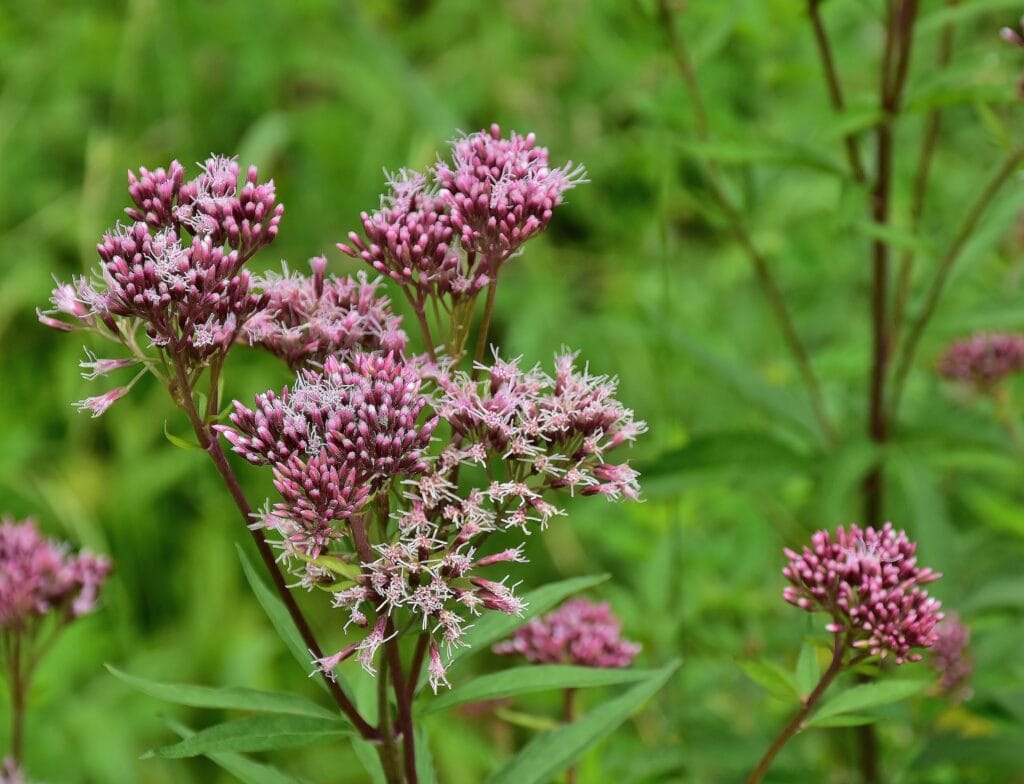
| Scientific Name: | Eutrochium purpureum |
| Bloom Time: | July to October |
| Sun Exposure: | Full sun, partial shade |
| USDA Hardiness Region: | 4-8 |
Sweet Joe Pye Weed is a perennial wildflower from the daisy family that is native to the southeastern United States and Canada. It is primarily found in upland forests and can tolerate drier soils than most other Joe-Pye weeds.
This plant will reach anywhere from 2 to 6 feet and bloom from July to October. It features large flower heads with several branches of tiny, pale pinkish-lavender florets.
23. Maximilian’s Sunflower
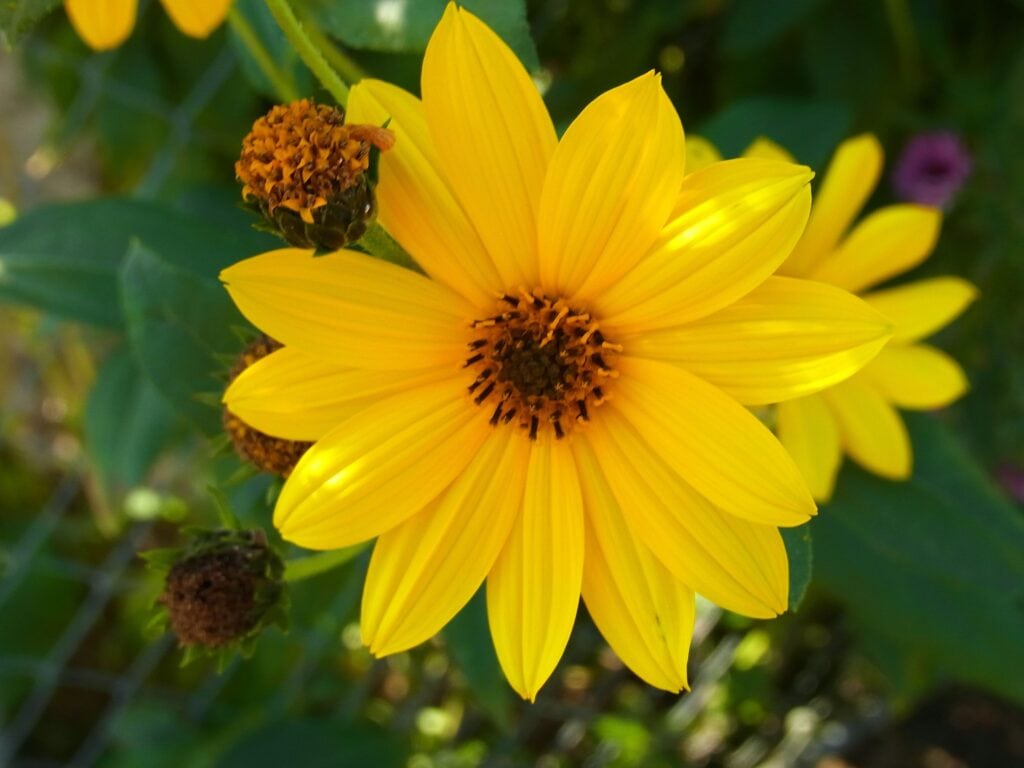
| Scientific Name: | Helianthus maximiliani |
| Bloom Time: | August to September |
| Sun Exposure: | Full sun |
| USDA Hardiness Region: | 4-9 |
Maximilian’s Sunflower is found throughout the midwestern United States US and southern Canada. The plant reaches from 3 to 10 feet in height with a spread of 2 to 4 feet. The flower head contains from 15 to 20 vibrant golden yellow ray flowers.
This wildflower will bloom in late summer to early fall from August to September. Many choose to grow these hard plants in their garden for the showiness and the fact that they tolerate more difficult growing conditions.
24. Prairie Blazing Star

| Scientific Name: | Liatris pycnostachya |
| Bloom Time: | July to September |
| Sun Exposure: | Full sun |
| USDA Hardiness Region: | 3-9 |
The Prairie Blazing Star is distributed across the central United States and is common to prairies, rocky terrain, open areas, and bluffs. They bloom from July to September and are known for their rounded pink to purple-headed flowers that are about 1/3 inch across.
These flowers are densely packed in a spike cluster that reaches up to one foot long. The plant itself reaches heights from 2 to 4 feet and has very distinct basal leaves that become shorter as they grow up the stem.
25. Michigan Lily
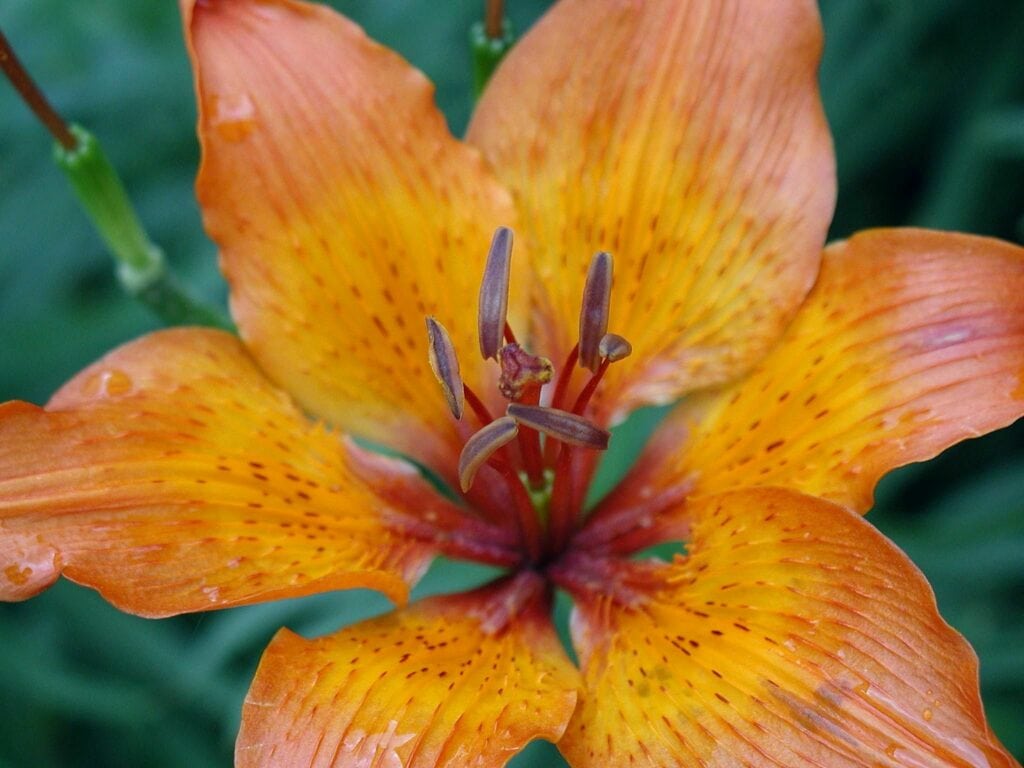
| Scientific Name: | Lilium michiganense |
| Bloom Time: | June to August |
| Sun Exposure: | Full sun, light shade |
| USDA Hardiness Region: | 4-8 |
The Michigan Lily is a single-stemmed perennial that reaches around 2 ½ feet in length. It is a true lily that is native to the midwestern United States throughout prairie habitats. Oklahoma is one of the southernmost areas of its distribution.
It features blade-like leaves with parallel veins and orange flowers with backward curved petals. The flowers themselves will reach about 2 ½ to 3 inches across and will bloom from June to August.
26. Giant Coneflower
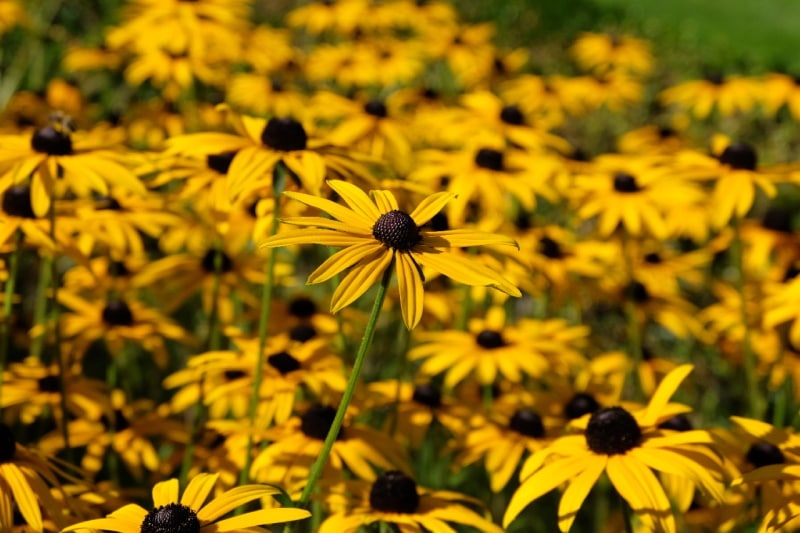
| Scientific Name: | Rudbeckia maxima |
| Bloom Time: | July to September |
| Sun Exposure: | Full sun, light shade |
| USDA Hardiness Region: | 4-9 |
Giant Coneflowers are native to the central and southern United States. The flower stalks will shoot up during the summer and display 2 to 3 vibrant yellow daisy-like blooms with a very prominent dark brown center that stands 2 to 6 inches tall.
Blooming lasts from July to September which is when butterflies will be highly attracted to the plant. Once blooms turn to seed, they will invite in various small birds.
27. Sweet Black-Eyed Susan
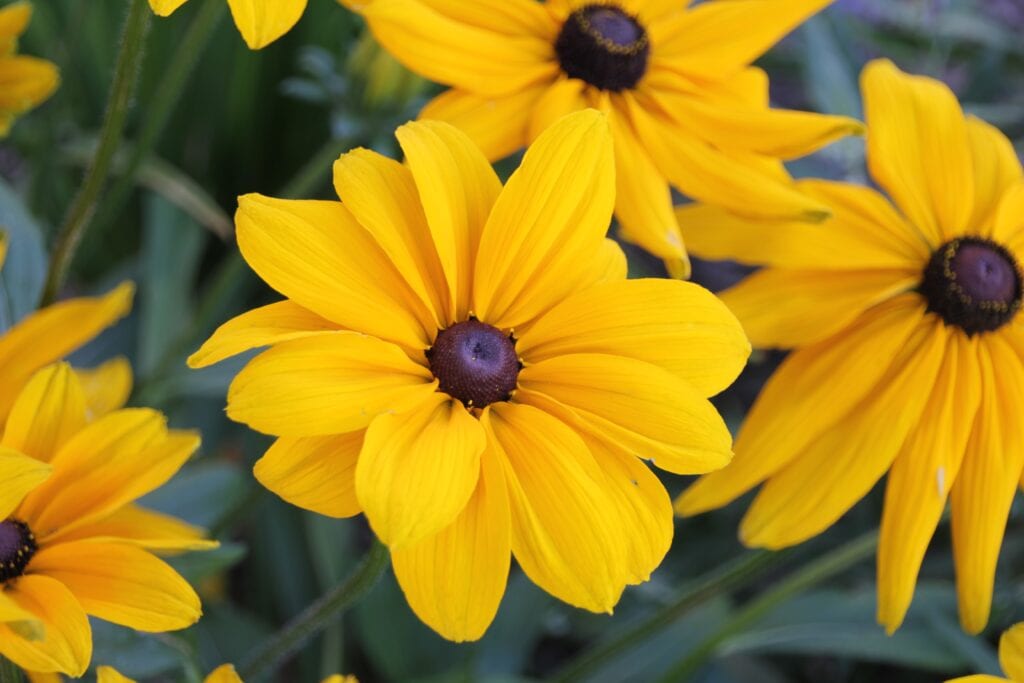
| Scientific Name: | Rudbeckia subtomentosa |
| Bloom Time: | June to September |
| Sun Exposure: | Full sun, light shade |
| USDA Hardiness Region: | 4-8 |
The Black-eyed Susan, also known as the Sweet Coneflower is a large wildflower that grows 3 to 5 feet tall. It is found throughout most of North America but is most common east of the Rockies in the United States.
These plants are highly attractive to a variety of pollinators. As described by the name, the center of the flowers have a black, sometimes dark brown center cone that is surrounded by yellow rays.
28. Brown-Eyed Susan
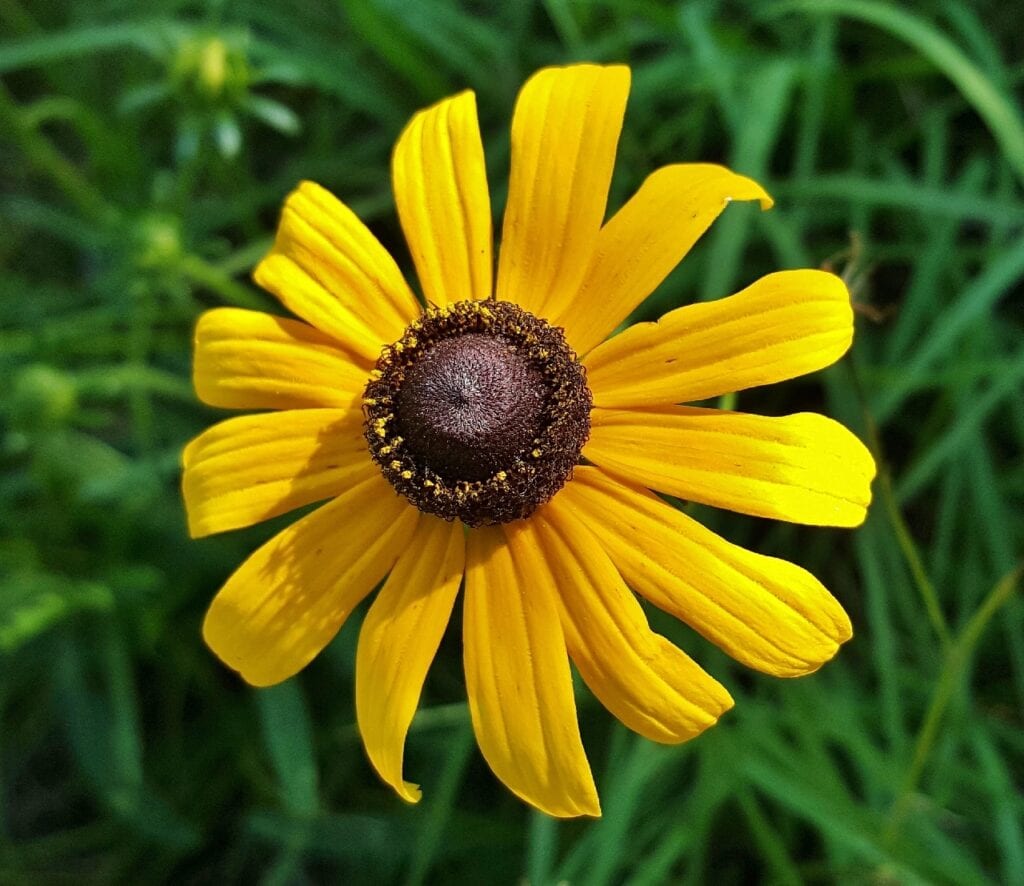
| Scientific Name: | Rudbeckia triloba |
| Bloom Time: | July to October |
| Sun Exposure: | Full sun, light shade |
| USDA Hardiness Region: | 4-8 |
The Brown-eyed Susan is an herbaceous biennial that goes by many common names including the Branched Coneflower, the Three-lobed Coneflower, and the Thin-leaved Coneflower. It is coming throughout the prairies of the Midwest and the eastern United States.
These plants are common to open woods, fields, and rock slopes. They look very similar to their relative, the Black-eyed Susan but are taller, bloom a bit later, and have smaller yellow petals.
29. Blue Sage
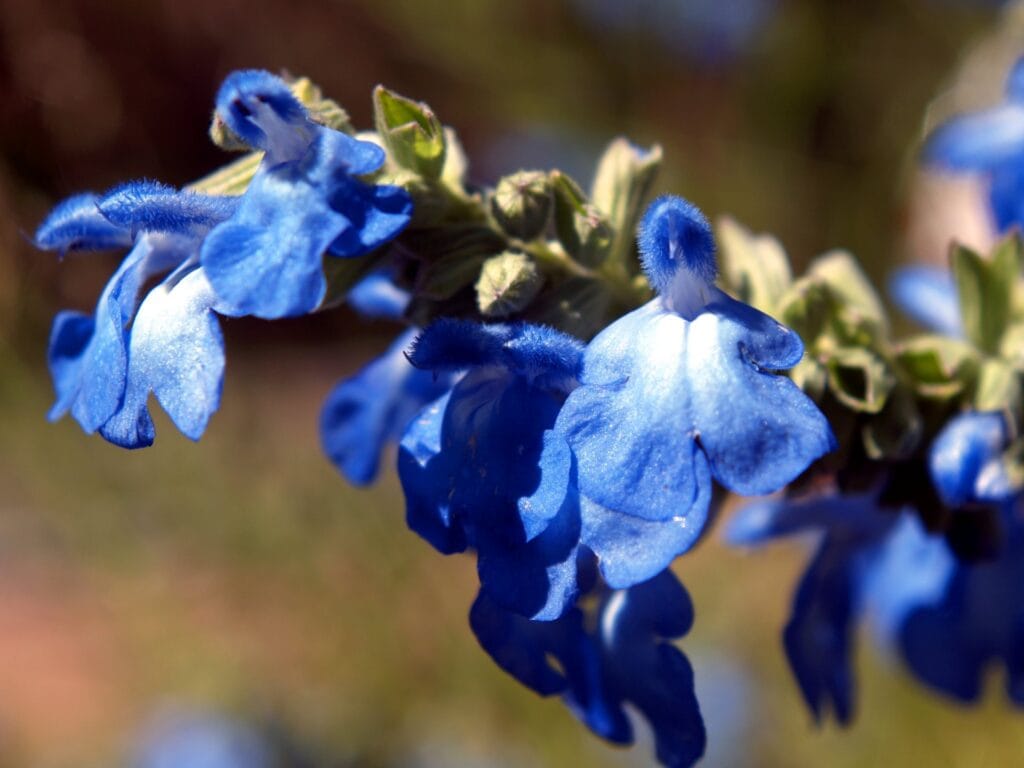
| Scientific Name: | Salvia azurea |
| Bloom Time: | June to September |
| Sun Exposure: | Full sun |
| USDA Hardiness Region: | 4-9 |
Blue Sage is a beautiful wildflower that is most common in dry, pine forests of the southern and central United States. The nectar is highly appealing to pollinators like butterflies, bees, and hummingbirds.
Blooms will show from June to September and are easy to spot with their wand-like clusters of sky-blue flowers. In Oklahoma, they may be seen throughout the prairie, along roadsides, and among more open habitats.
30. Compass Plant

| Scientific Name: | Silphium laciniatum |
| Bloom Time: | Mid-summer to early fall |
| Sun Exposure: | Full sun |
| USDA Hardiness Region: | 5-9 |
The Compass plant is a tall, showy, yellow wildflower that is native to North America. It is common throughout the eastern and central United States and extends as far west as New Mexico. It is also found as far north as Ontario, Canada.
Blooms can be observed starting in mid-summer into early fall, from July through September. The flower looks much like a sunflower with heads that reach over 2 inches across. A mature Compass Plant will range from 6 to 12 feet in height with a thick light to medium green stem.
31. Indian Pink
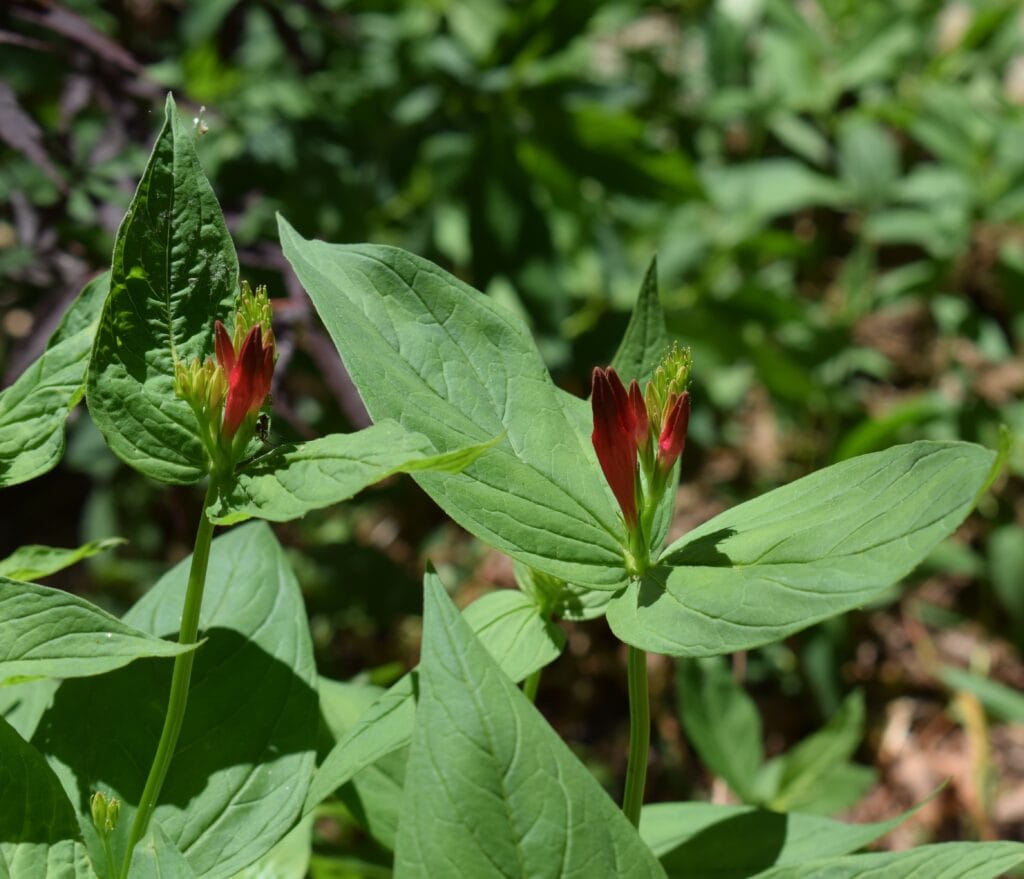
| Scientific Name: | Spigelia marilandica |
| Bloom Time: | May to June |
| Sun Exposure: | Partial to full shade |
| USDA Hardiness Region: | 5-7 |
The Indian Pink, which is also called Woodland Pinkroot or simply Pinkroot, is a native species to the Southeastern portion of the United States. It is an upright perennial that reaches anywhere from 1 to feet tall up to 1 ½ feet wide.
It features very glossy green leaves with vibrant red tubular flowers with yellow interiors. The flowers only bloom from about May to June but are very attractive to hummingbirds and butterflies.
32. New England Aster
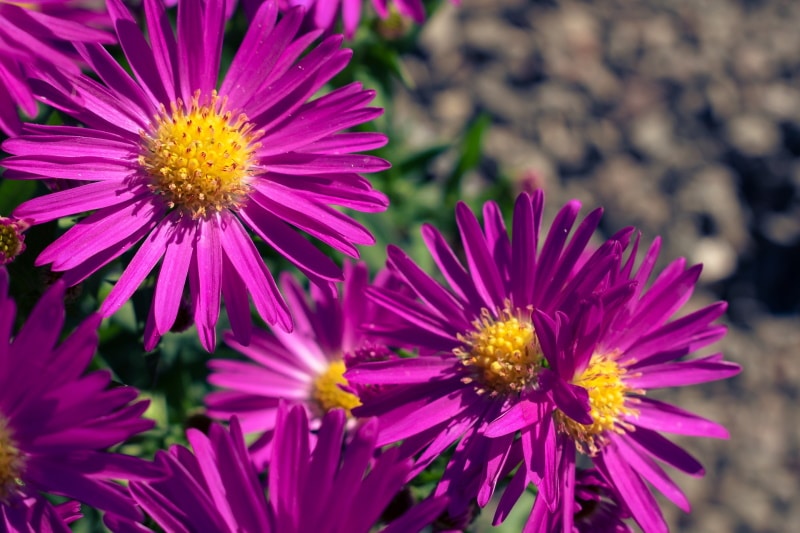
| Scientific Name: | Symphyotrichum novae-angliae |
| Bloom Time: | August to October |
| Sun Exposure: | Full sun, light shade |
| USDA Hardiness Region: | 4-8 |
The New England Aster is distributed throughout most of the United States except for a few states in the south and the west. It is a very showy perennial with stems reaching up to 6 feet in height and pinkish to purple flowers.
This wildflower’s stems and branches are light brown to dark brown and are typically covered in short white bristly hair. The flowers are large with a yellow center and will bloom from August to October.
33. Common Dandelion

| Scientific Name: | Taraxacum officinale |
| Bloom Time: | April – October |
| Sun Exposure: | Full sun, partial shade |
| USDA Hardiness Region: | 3-9 |
Dandelions are found throughout the entire United States and Canada. They are very adaptable plants that can handle various weather conditions. They display a solitary yellow flower at the end of a hollow stalk.
Dandelion flowers are typically 1 to 2 inches across and will either be flat or spherical. Once it has matured, it leaves behind the tufty white portions called the pappi, which will disperse in the wind. Dandelions are often considered a nuisance and people go to great lengths to rid their yards of them, but they also offer some significant health benefits.
34. Prairie Spiderwort
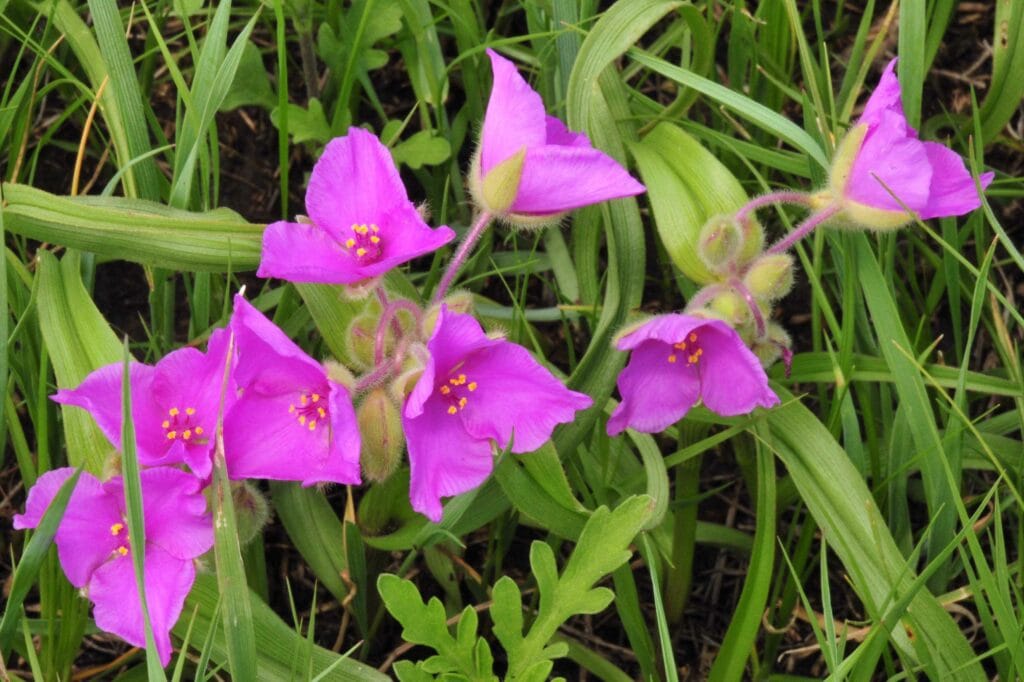
| Scientific Name: | Tradescantia bracteata |
| Bloom Time: | June to August |
| Sun Exposure: | Partial shade |
| USDA Hardiness Region: | 4-9 |
Long-bracted Spiderwort or Prairie Spiderwort is a species of wildflower native to the northern and central Great Plains and the Mississippi Valley region. It is distributed across Oklahoma and stretches all the way north to Minnesota and Montana. There are populations further east, but they are rare and isolated.
Leaves reach 4 to 10 inches in length and have prominent parallel veins. Both the stems and leaves are either smooth or have scattered hairs. The flowers bloom from June to August and reach 1 to 1½ inches across and have three egg-shaped blue to violet-colored petals.
35. Blue Vervain
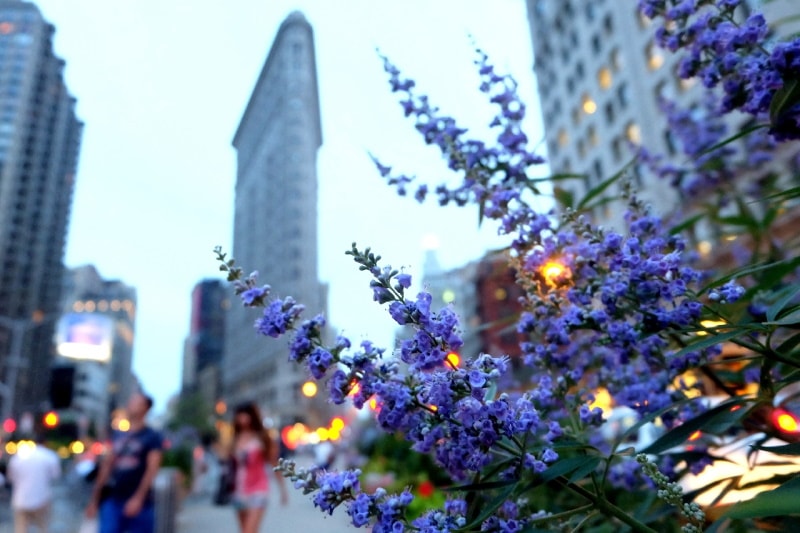
| Scientific Name: | Verbena hastata |
| Bloom Time: | June to September |
| Sun Exposure: | Full sun, partial shade |
| USDA Hardiness Region: | 3-8 |
Blue vervain is a very common perennial wildflower found throughout the United States and southern Canada. It features small, thin spikes ranging from 2 to 5 inches that branch upward. These spikes grow longer as the plant matures.
Purplish blue flowers with five petals will bloom from the spikes during the summertime. The stems of blue vervain are square and can either be green or red. The leaves grow to around 7 inches long and 1 inch wide. The entire plant will reach between 2 and 6 feet in height and has a spread of about 1 to 2.5 feet.
Conclusion
There are plenty of stunning wildflowers throughout the state of Oklahoma scattered across a variety of habitats. Not only are they wonderful to observe and vital to the local ecosystem, but they can also be enjoyable to grow in your yard or garden.
Featured Image Credit: Jumpstory
Contents
 The 35 Wildflowers that Grow in Oklahoma
The 35 Wildflowers that Grow in Oklahoma